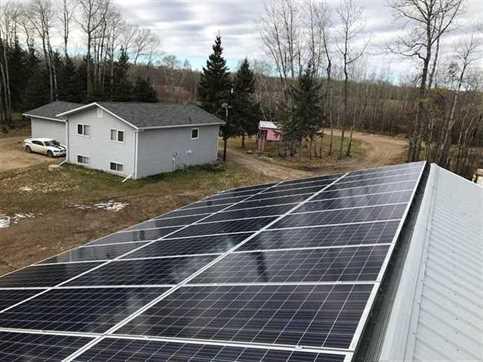Canada is the second largest country in the world by total area. Despite the country’s vast territory, 90% of Canadians live within 160 km of the US border.
This means a large number of Canadian communities fall under the government’s definition of “remote”: a community that is located over 350 km from the nearest service centre having year-round road access. A large number of communities are also “isolated”: they have scheduled flights and phone service, but are without year-round road access.
As you can imagine (or, perhaps, have experienced first-hand), remote and isolated communities encounter logistical problems that make the delivery of energy a challenge. Every community in Nunavut meets the definition of remote – these communities are all powered by diesel, which is shipped to them regularly. There are many remote communities throughout the Northern territories, as well as in Quebec, Ontario, Manitoba, and Alberta.
All of these communities share similar challenges – acquiring energy can be costly, downed lines can be out of commission for long stretches of time because of transportation challenges, and many of these communities can only acquire energy created by fossil fuels.
Renewable energy can help with all of these challenges. Moving forward, solar will be an incredibly powerful tool for Canada’s remote communities.
Energy independence
Solar and other renewable energies provide a degree of energy independence to remote communities. For these communities, energy independence isn’t some philosophical abstraction – it’s added security.
When power lines go out and you have to wait weeks before they get fixed, it’s essential to have some other means of generating energy – even if it’s only being produced during the daytime. As the storage capacity of solar batteries increases, so too will solar power’s ability to provide energy independence to remote communities.
Environmentally friendly
Many northern communities rely on diesel-fired power plants to generate their electricity. While some areas (especially in Manitoba, Quebec, the Northwest Territories, and Yukon) get their power from hydroelectricity, even hydro can cause massive environmental damage. Dams disrupt existing ecosystems, and significant amounts of methane are released by the decomposition of flooded plants.
Every kWh of energy created by solar energy reduces the environmental impact of our energy consumption. Remote communities looking to reduce their environmental impact would do well to look into solar.
Lower costs
Finally, solar panels reduce the cost of energy for remote communities. This is especially true for diesel-powered communities. These communities try to buy diesel at the lowest possible price point, then store that diesel for use in diesel-fired power plants. By employing solar as a secondary source of energy, these communities can store diesel they bought at a low price for longer, maximizing its value and creating more windows in which they can purchase less expensive fuel.
At Powertec Solar, we started by providing solar services in Winnipeg. We’ve since expanded, and we now offer solar services to the remote communities in Northern Manitoba and Nunavut. If you’re outside of these areas, but you’re looking to harness the power of the sun to promote a healthier community, get in touch with us. We’d love to help you bring your solar project to life.

